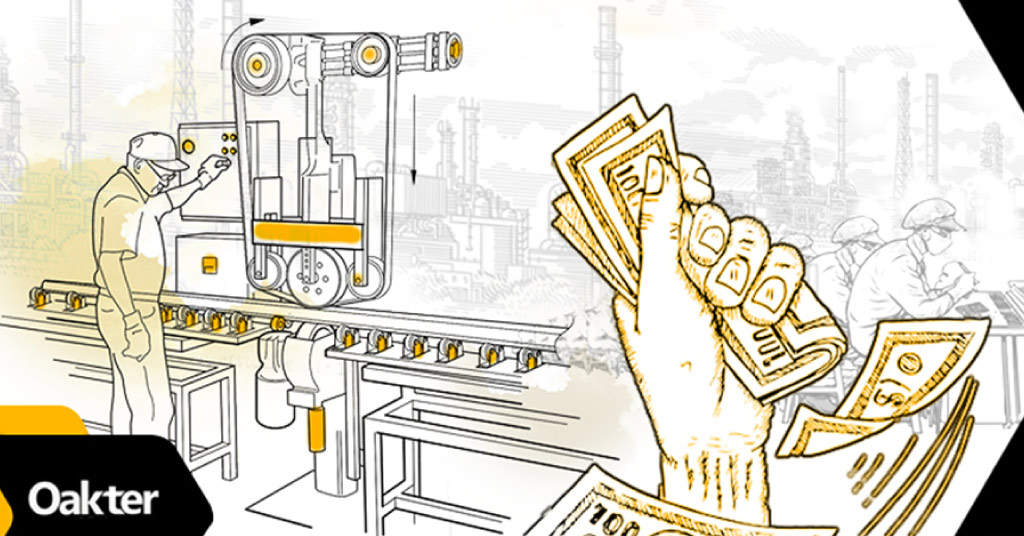
Is Contract Manufacturing Cost Effective? Decoding the Truth
The contract manufacturing market is growing rapidly. With a projected CAGR of 9.4%, it’s expected to reach a whopping $188.07 billion by 2026. It’s not surprising, as many companies are turning to contract manufacturing to cut costs and improve efficiency.
Contract manufacturing is an agreement between a manufacturer and a client company to produce specific products catering to the client’s needs. It differs from private labelling as it requires companies to provide instructions for manufacturing products and oversee the manufacturing processes.
In this blog, we will explore some major benefits of the contract manufacturing pricing model, especially when it comes to the cost-cutting approach.
12 Cost-Saving Benefits of Contract Manufacturing Pricing Model

Contract manufacturing has become more popular in recent years as it helps:
- Reduce manufacturing costs.
- Provide more flexibility to companies.
- handle product manufacturing efficiently.
However, the benefits of contract manufacturing go beyond just cheaper labour or improved operational efficiency, and it’s essential to understand how different factors come together to save money when using contract manufacturing.
1. Reduce Project Timelines
A reliable and well-controlled manufacturing schedule is essential for timely delivery. Experienced contract manufacturers have existing capacity and supply chains, experienced teams, and co-location with suppliers. This can reduce project timelines, helping to save costs and meet time-to-market deadlines.
2. Lower Production Costs
Contract manufacturers can offer lower production costs due to economies of scale, as they are producing goods for multiple customers. Their specialised expertise in manufacturing processes makes them more efficient and cost-effective for companies who partner with them.
3. No Need To Invest in Manufacturing Equipment
When companies collaborate with contract manufacturers, they can avoid the costly investment in manufacturing equipment. As a result, they can enjoy substantial cost savings in the long run. They also gain access to modern facilities and a highly skilled workforce, ultimately reducing their expenses.
4. Lower Labour Costs
Contract manufacturers often have lower labour costs, as they may be located in regions with lower wages. This can result in lower production costs for the company that is outsourcing its manufacturing.
5. Focus on Qualitative Products
Contract manufacturers can save costs by improving product quality and reducing the need for expensive post-production interventions.
Experienced contract manufacturers can achieve this by leveraging their:
- Knowledge of best practices and common errors
- Manufacturing scale for quality systems and equipment investment
- Proximity to suppliers for effective quality control and auditing
- In-house processes for greater control and error correction
- Online testing and rigorous quality inspections.
6. Reduced Overhead Costs
Companies that use contract manufacturing can reduce overhead costs, such as salaries for manufacturing staff, maintenance costs for manufacturing equipment, and building costs for manufacturing facilities.
7. Reduced Inventory Costs
Contract manufacturing allows companies to produce goods on demand, reducing the need to maintain large inventory levels. This can result in lower inventory costs for the company.
8. Bulk Production
Contract manufacturing pricing models can offer cost savings through bulk production. Outsourcing manufacturing to a contract manufacturer can lead to lower production costs per unit due to economies of scale.
Contract manufacturers can leverage this advantage by producing goods in larger quantities to reduce costs, which can benefit the outsourcing company.
9. Reduced Overhead
Contract manufacturers enable companies to save money on overhead costs such as labour, equipment, and facilities. By outsourcing production, companies can avoid investing in expensive manufacturing infrastructure.
10. Cost Sharing
Contract manufacturers may offer cost-sharing arrangements, where the manufacturer shares some production costs with the client company. This can be a win-win situation, as the manufacturer can still profit while offering the client company a lower production cost.
11. Competitive Bidding
The pricing models of multiple contract manufacturing often involve competitive bidding, where multiple contract manufacturers compete for the client company’s business. This competition can drive down prices and help the client company find the most cost-effective manufacturing solution.
12. Flexibility
Contract manufacturing pricing models offer flexibility, allowing companies to adjust production levels based on demand. This can help companies avoid the costs of maintaining excess manufacturing capacity during periods of low demand.
Summing Up
Contract manufacturing has gained popularity because it has helped reduce the cost of manufacturing goods and given companies more flexibility in handling their product manufacturing.
Cost is a significant driver for outsourcing the manufacturing function, particularly to a lower-cost destination.
It helps to have better control over the following:
- Manufacturing labour costs
- Efficient labour force management
- Economies of scale in purchasing and subcontracting
- Enhanced supply chain and inventory management
- Reduced overhead costs
- Improved scalability and flexibility of operations
- Enhanced product quality
- Reduced manufacturing timelines
- Access to expertise and technical insights.
Cost-effective Product Planning With Oakter
If you’re looking to a looking to avail all of the above-mentioned benefits, check out Oakter.
We are an ODM company shipping 500k+ products every month. Our experienced team of professionals can help you reduce costs and bring your product to market faster.
Oakter can help you figure out fine-tuned methodologies to quickly scale your operations, making scalability and flexibility key success factors.
Contact us today— we can help bring your vision to life.
- https://slotjitu.com/
- https://linkslotjitu.com/
- jual303
- jual 303
- slot
- https://heylink.me/jual303/
- https://www.slotjitu.id/
- https://slot-gacor.id
- https://slot-gacor-2026.com
- https://adslotgacor.com/
- https://slotgacor77.id/
- https://slotjitu.net/
- https://bento.me/kawasan303/
- https://www.slotdepo10k.id/
- https://www.slotraffiahmad77.com/
- https://togelsgp2023.com/
- https://www.slotraffiahmad88.com/
- https://www.slotraffiahmad.net/
- https://www.slotraffiahmad.org/
- https://slotgacor-maxwin.com/
- https://www.nausenaadventures.com/
- https://www.kawasan303.org/
- https://slotscatterhitamgacor.com/
- https://superscatterhitam.com/
- https://www.slotraffiahmad.id/
- https://suleslotgacor.com/
- https://www.kawasan303.com/
- https://pgslottop.id/
- https://kawasan138.com/
- https://slotsuleofficial.com/
- https://slot-raffi-ahmad.com/
- https://scatterhitamgacor.com/
- https://linkslotgacor.id/
- https://sundulbola.com/
- https://ucosigtau.com/
- https://www.ia-itb.com/

